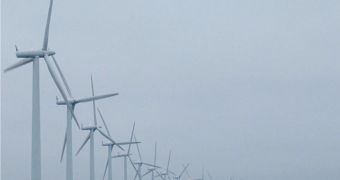While constructing a wind farm may not seem overly complex, the challenges associated with placing turbines at an off-shore location are monumental. Foundations need to be set in place at the correct location, and secured tightly to the bottom of the sea or ocean. Then, the machines themselves need to be constructed out of extremely resilient materials, so as to withstand the pressure of the constant pounding waves exert on them. For this reason, and many other more, some experts have been saying that constructing offshore wind farms is more of a politically-driven objective.
There is no doubt in any reasonable person's mind that this type of power plant is very efficient at actually producing electricity. What critics are saying is that the sheer volume of work associated with constructing them, as well as the breathtaking costs, may not be worth it. Granted, most offshore wind farms would eventually recover their own costs. This will naturally not happen right away, but within a few years, or maybe even a couple of decades. But generally, investors have a problem with waiting more than 10 years to get a return on the money they put into a project, Technology Review reports.
At this point, experts estimate that the 28 coastal states in the United States (which together consume 78 percent of the country's electricity) could cover only 20 percent of their needs from land-based wind farms. But state authorities want to produce energy locally, from sources other than oil and natural gas deposits. “They want their energy to be local. They want to harvest it inside their own state. And for the first time they can conceive of that possibility,” explains the leader of offshore wind energy research activities at the Golden, Colorado-based Department of Energy (DOE) National Renewable Energy Laboratory, Walt Musial.
On the bright side, US President Barack Obama's 2011 budget proposal includes a $49 million fund for researching offshore wind energy, and related power plants. This is the first time federal authorities take such an active interest in the issue. Musial believes that the presidential proposal is a “significant signal that offshore wind is on the table as a new direction for the Department of Energy.” According to expert Matthew Kaplan, the United States could benefit from an installed capacity of 8,100 megawatts by 2025, with the majority of wind farms slated to begin constructing by 2018. He is a senior analyst at Emerging Energy Research and specializes in tracking North American wind energy markets.

 14 DAY TRIAL //
14 DAY TRIAL //